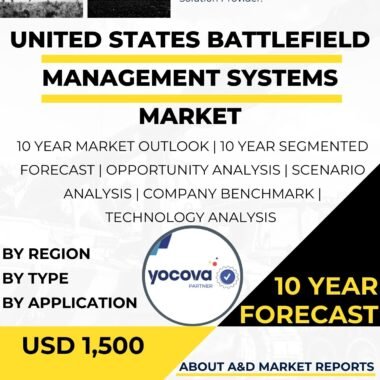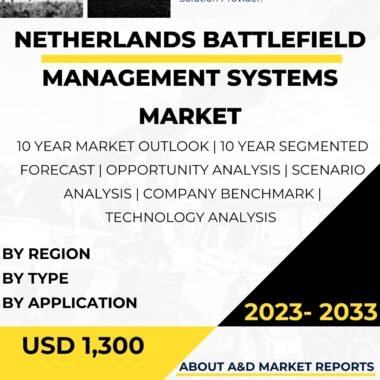Description
The United Kingdom’s battlefield management systems market is a crucial aspect of its defense industry, providing the country’s armed forces with advanced technologies for command, control, communications, computers, intelligence, surveillance, and reconnaissance (C4ISR) on the modern battlefield. Battlefield management systems are integrated solutions that enable real-time data sharing, situational awareness, and decision-making capabilities, enhancing the effectiveness and efficiency of military operations.
The UK’s investment in battlefield management systems reflects its commitment to maintaining a competitive edge and ensuring the readiness of its armed forces. These systems play a pivotal role in ensuring that commanders have timely and accurate information, enabling them to make informed decisions on the battlefield.
The UK’s battlefield management systems market is served by a combination of domestic development and international collaboration. Domestic defense companies, such as BAE Systems and Thales UK, are key players in providing advanced C4ISR solutions tailored to meet the specific requirements of the UK Armed Forces. These companies leverage their expertise in communications, information technology, and cybersecurity to deliver cutting-edge battlefield management systems.
Moreover, the UK actively collaborates with international partners to explore joint development and procurement opportunities. International partnerships contribute to cost-sharing, technology transfer, and diplomatic cooperation, while also strengthening defense ties with allied nations.
The UK’s battlefield management systems encompass a wide array of technologies and capabilities. These systems include command and control centers, communications networks, intelligence gathering sensors, unmanned aerial vehicles (UAVs), and surveillance platforms. The integration of these components creates a comprehensive and connected network that enables real-time information exchange and collaboration among military units.
One of the critical components of the UK’s battlefield management systems is its satellite communications infrastructure. Satellite communication networks play a pivotal role in ensuring secure and reliable data transmission across vast distances, allowing troops to stay connected and access critical information even in remote and austere environments.
Furthermore, the UK’s battlefield management systems include advanced sensors and reconnaissance technologies. These capabilities provide commanders with valuable data on enemy movements, terrain conditions, and potential threats, enhancing situational awareness and facilitating effective decision-making.
In addition to land-based systems, the UK also focuses on developing and integrating maritime and airborne battlefield management capabilities. Naval vessels and aircraft are equipped with state-of-the-art communication and sensor systems, allowing for seamless coordination and information sharing across different domains.
The UK’s battlefield management systems are designed to enhance the efficiency and effectiveness of military operations across various operational environments. In conventional warfare scenarios, these systems provide commanders with critical information for planning and executing offensive and defensive operations. During peacekeeping and humanitarian missions, battlefield management systems support logistics and coordination efforts, ensuring the safety and success of military and humanitarian operations.
To ensure the readiness and proficiency of military personnel in using battlefield management systems, the UK Armed Forces conduct rigorous training and exercises. Soldiers and personnel undergo specialized training to operate and leverage these complex technologies effectively, enabling them to leverage the full potential of battlefield management systems in a variety of operational scenarios.
Moreover, the UK’s commitment to cybersecurity is paramount in the realm of battlefield management systems. As these systems rely on information technology and communication networks, safeguarding data integrity and protecting against cyber threats is crucial to maintain a tactical advantage and prevent potential breaches of sensitive information.
However, challenges exist in the UK’s battlefield management systems market. The rapid pace of technological advancements requires continuous research and development to keep these systems up-to-date and relevant on the modern battlefield. Moreover, the integration of various technologies and systems requires careful planning and testing to ensure seamless interoperability and optimal performance.
Furthermore, the UK faces ethical and political considerations in the use of battlefield management systems, particularly in terms of data privacy and civilian protection in conflict zones. Ensuring responsible use and adherence to international humanitarian law are essential aspects of employing these advanced technologies on the battlefield.
In conclusion, the United Kingdom’s battlefield management systems market is a critical component of its defense strategy, providing the country’s armed forces with advanced C4ISR capabilities. Through domestic development, international collaboration, and adherence to strict safety and security protocols, the UK maintains a credible and effective battlefield management capability. The deployment of these systems not only enhances the UK’s military capabilities but also allows the country to contribute to international security efforts and support humanitarian missions worldwide.




